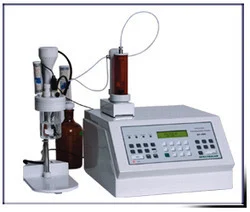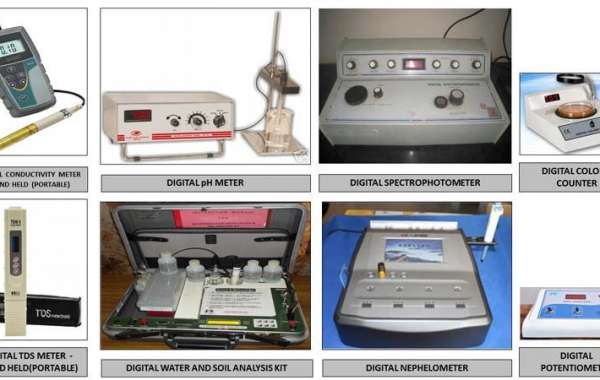Maintaining and calibrating analytical laboratory equipment is a key aspect of the accuracy, reliability, and consistency of results achieved in any laboratory. Most of the critical instruments include spectrophotometers, chromatography systems, pH meters, balances, moisture analyzers, and many others used in research, quality control and diagnosis, etc. Maintenance not only prolongs their life but equally modernizes the laboratories to an international level. Identifying a reputable analytical laboratory equipment manufacturer and supplier in India can ease this task by providing precise and reliable instruments. In this blog, we mentioned ways to maintain and calibrate your Analytical Laboratory Equipment.
8 Ways to Maintain And Calibrate Analytical Laboratory Equipment
Abide by the Instructions Offer by The Manufacturer
The primary step in the best practice maintenance and calibration process is to ensure one sticks to the guidelines provided by the manufacturer. These documents set out the steps necessary for the cleaning, troubleshooting, and calibration exercises. Overlooking such recommendations often results in mistakes and accelerated degradation of the equipment. For instance, the manual of a chromatography system usually contains information on how to preserve the integrity of the columns that are very essential for effective separations.
Establishing a Calibration Schedule
Every laboratory should define a uniform calibration plan based on systematic procedures. Calibration frequencies will depend on the equipment type and how often it is put to use. For example, weighing balances should be calibrated every day or before critical measurements, while spectrometers should be recalibrated only after excessive usage or changes in the environment.
Observe Consistent Working Conditions
Temperature, humidity, and vibrations are considered to be the environmental factors that impact the performance of the Analytical Laboratory Equipment. An environment guarantees that equipment such as the moisture analyzer operates efficiently without interference. Ensure that instruments are placed on steady surfaces and shun direct solar radiation or varying temperatures.
Monitoring Equipment Performance
The operating performance of the equipment can be greatly hampered by residue that is buildup. For example, pH meters have to be rinsed after every use in order to avoid contamination. Moreover, in order to ensure their effectiveness and extension of their life, columns in the chromatography systems require routine cleaning.
Employ Certified Calibration Standards
The use of certified calibration standards guarantees accuracy and uniformity. For instance, spectrophotometers require standard solutions when calibrating the wavelength, while balances use certified masses. Using materials that are not verified can cause errors and distort findings in research.
Train Laboratory Personnel
Professional maintenance of the equipment is dependent upon well-trained personnel. The staff should be trained to operate, calibrate, and correct each instrument if it fails. Periodical training sessions are a beneficial practice for every employee.
Maintain Comprehensive Service Records
Recording maintenance of equipment and its calibration is crucial for audits and for problem-solving. Each instrument has its own logbook which assists in the monitoring of performance curves and repeating problems. These records are often essential for ISO certification and other regulatory requirements.
Utilize Professional Calibration Services
As for gas chromatography systems and other sophisticated instruments, professional calibration services cannot be done without them. These professionals utilize advanced tools to recalibrate and validate the equipment making sure they work optimally and are in compliance with quality standards.
Importance of Maintaining and Calibrating Analytical Laboratory Equipment
The research carried out by the International Journal of Metrology and Calibration states that those laboratories that adopt proper maintenance and calibration schedules increase their operational efficiency by 30% and downtime occurrences by 20%. Furthermore, the neglected calibration can lead to inaccuracies up to 10% that ultimately embarrass the project and lead to monetary wastage. The study emphasizes the need for proper maintenance in the life and standardization matter of the Analytical Laboratory Equipment as standardization to ISO/IEC 17025.
Essential Analytical Laboratory Equipment
Spectrophotometer
A spectrophotometer is a vital apparatus for any kind of research since it can quantify the absorption of light. It is important to remove all cuvettes and sample compartments that can obstruct light dissipation. Use a lens wipe or air blower to softly eliminate dust from the optical parts. For wavelength calibration, there is a need to use certified potassium dichromate solutions. Make a habit of the same each time there is a variation in temperature or power loadings.
Chromatography System
Chromatography systems have gained tremendous popularity for the purpose of constituent separations and composition analysis of composite substances. After each run, column cleaning as well as checking the tubes for leaks are very important. Worn parts such as seals should be replaced to eliminate inefficiencies within the system. Standard mixtures are used for routine calibration to check retention times and areas of peaks established for the mixtures. This gives an assurance of uniform analytical results.
Analytical Balance
The analytical balance is an important device for measuring weight in the laboratory with great accuracy. Ensure that the balance is clean, and mount it on a stable and vibration-free base. Keep the balance temperature constant since too low or too high temperatures may affect the readings. Zero the balance with standard weights before and after every critical reading or after the balance is moved to a different place. Regular calibration helps to reduce errors.
pH Meter
Acidic or alkaline nature determinations of solutions cannot be possible without pH meters. After every session, electrodes should be rinsed with distilled water and soaked in appropriate buffer solutions, avoiding contact with air. Be vigilant regarding any signs of cracks or wear on electrode surfaces. The pH meter must also be calibrated with a minimum of two buffer solutions such as buffer pH 4.0 and 7.0. Different buffer solutions call for different calibrations.

Why Choose JLab?
For those looking for Analytical Lab Equipment manufacturers and suppliers in India, Jlab is the best choice. Being in the industry for decades, Jlab has developed a comprehensive range of laboratory equipment that is high in quality, and precision and crafted to serve the varied requirements of laboratories. The Jlab's continuous commitment to improvement makes it possible for the equipment to always have the most advanced technology, increasing its efficiency even more. Jlab also offers outstanding after-the-sale service, including calibration and maintenance services which make your laboratory run optimally. By picking Jlab, you get precision, quality, and great service.
Conclusion
Analytical laboratory equipment is important and needs to be maintained and calibrated frequently. Instruments like spectrophotometers and pH meters ought to be taken care of by the maintenance and calibration requirements for their effective functionality. Creating frequent schedules, training personnel, and having certified standards help labs to mitigate mistakes, increase productivity, and conform to international requirements. Jlab is a reliable Analytical Lab Equipment manufacturer and supplier in India ensuring equipment of high quality and professional assistance. Neglecting maintenance and calibration can damage your research integrity over the long term, and harm the output of the laboratory.














